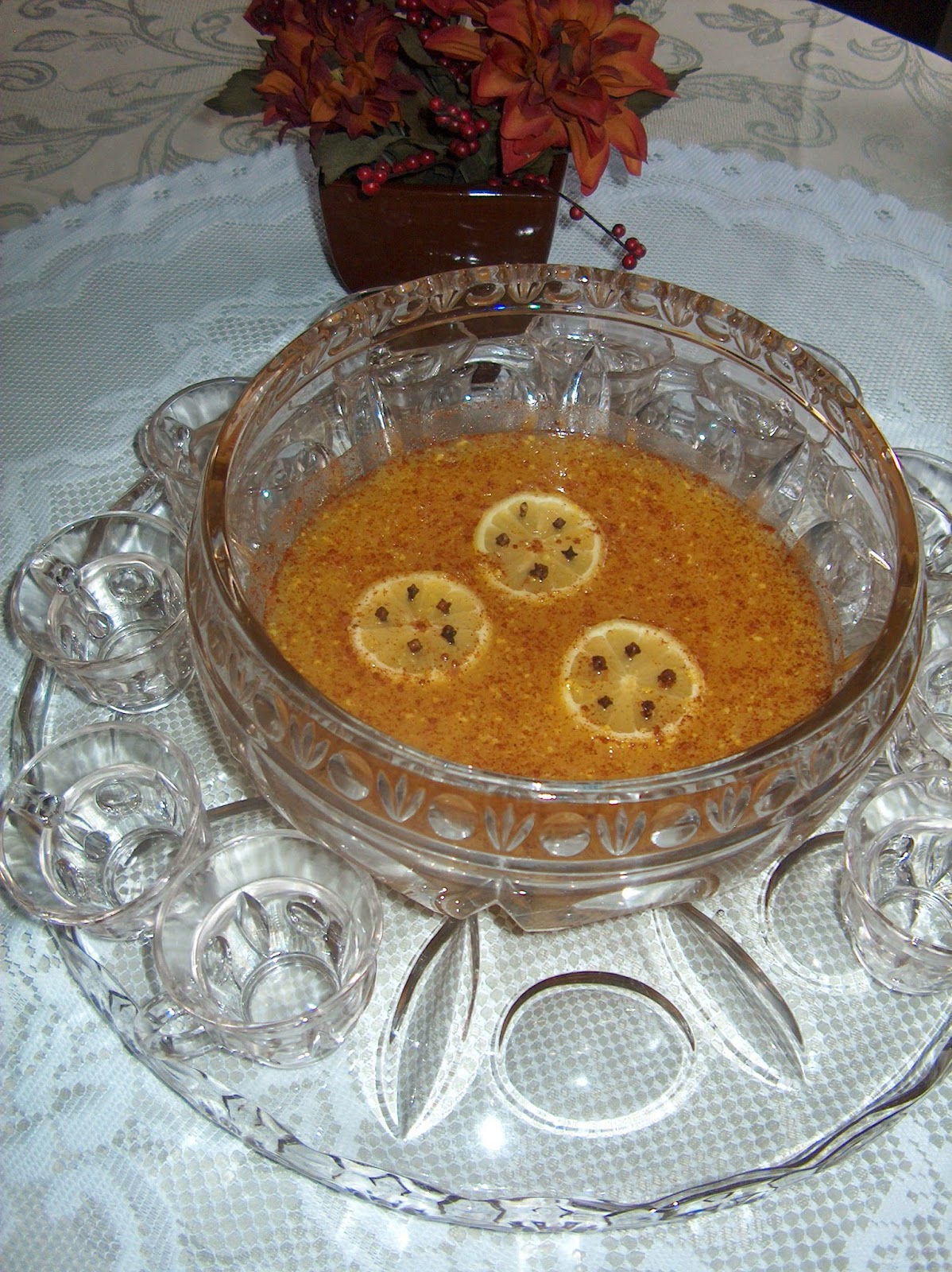Whether it’s hard or soft, we all enjoy a refreshing beverage! Pick a historic beverage to recreate - remember to sip responsibly!
April is the most unbelievably gorgeous month in North Carolina. The redbud trees have bloomed, the dogwood blossoms are in full glory, and the azalea bushes are bursting! Time for beautiful hours sitting on the deck with the smell of spring, the warmth of the sun, and a refreshing drink in hand.
Our CBS Homemakers Exchange Recipes booklet for October, November, December 1950 has a tangy and sweet-sounding recipe for Spiced Orange Punch and we decide it would be the perfect beverage for our deck-sitting time.
First a trip to the store for some ingredients. As I cruised the ice cream aisle I was amazed at the selection. An entire aisle, shelf upon shelf, of frozen desserts! After several tours up and down the aisle with willpower getting weaker and weaker, I finally spotted the sherbert on one top shelf. Only four flavors? Raspberry, orange, lime, and rainbow. As I was standing there considering my options, a sweet and very tiny lady stepped in front me. She could barely reach the top shelf for the raspberry sherbert and I prepared myself to catch her or the sherbert or both. I asked her if that was a good flavor. She beamed at me and told me that the raspberry and lime were the best and how she was going to make a drink using ginger ale. I pointed to my ginger ale in my basket (or buggy as it is called here in the southern United States) and told her that I was making a punch. We laughed and chatted about our recipes. She told me how she used to have her punch at weddings all the time. A very fun encounter!
With all ingredients in hand we prepare our punch.
 |
| Orange and pineapple juices, lemon rind, powdered sugar, cloves, nutmeg and cinnamon. |
 |
| Added to the punch bowl with ginger ale. |
 |
| Clove-studded lemon slices float on top. |
 |
| A scoop of lime sherbert in the punch cup. |
 |
| A froth of flavor! |
This punch bowl with its ladle and 12 cups was given to me by Patrick's mother, Bernice. It was her punch bowl before she married Patrick's father and was used at her bridal shower.
Some day I'll pass this special set on to Patrick's daughters, but for today it was used for our special drink on the deck watching spring bloom in North Carolina.
Enjoy!
Patrick and Jeanette

























